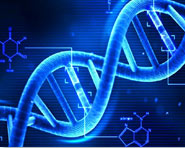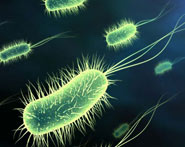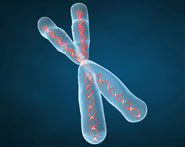


 النبات
النبات
 الحيوان
الحيوان
 الأحياء المجهرية
الأحياء المجهرية
 علم الأمراض
علم الأمراض
 التقانة الإحيائية
التقانة الإحيائية
 التقنية الحيوية المكروبية
التقنية الحيوية المكروبية
 التقنية الحياتية النانوية
التقنية الحياتية النانوية
 علم الأجنة
علم الأجنة
 الأحياء الجزيئي
الأحياء الجزيئي
 علم وظائف الأعضاء
علم وظائف الأعضاء
 الغدد
الغدد
 المضادات الحيوية
المضادات الحيوية| Pathogenesis and Spectrum of Disease of Beta- Hemolytic Streptococci |
|
|
|
Read More
Date: 9-3-2016
Date: 10-3-2016
Date: 14-3-2016
|
S. pyogenes, the most clinically important Lancefield group A, produces several factors that contribute to its virulence; it is one of the most aggressive pathogens encountered in clinical microbiology laboratories. Among these factors are streptolysin O and S, which not only contribute to virulence but are also responsible for the beta-hemolytic pattern on blood agar plates used as a guide to identify this species. Streptolysin S is an oxygen stable, nonimmunogenic hemolysin capable of lysing erythrocytes, leukocytes, and platelets in the presence of room air. Streptolysin O is immunogenic, capable of lysing the same cells and cultured cells, is broken down by oxygen, and will produce hemolysis only in the absence of room air. Streptolysin O is also inhibited by the cholesterol in skin lipids resulting in the absence of the development of protective antibodies associated with skin infection. The infections caused by S. pyogenes may be localized or systemic; other problems may arise as a result of the host’s antibody response to the infections caused by these organisms. Localized infections include acute pharyngitis, for which S. pyogenes is the most common bacterial etiology, and skin infections, such as impetigo and erysipelas .
S. pyogenes infections are prone to progression with involvement of deeper tissues and organs, a characteristic that has earned the designation in general publications as the “flesh-eating bacteria.” Such systemic infections are life threatening. Additionally, even when infections remain localized, streptococcal pyrogenic exotoxins (SPEs) may be released and produce scarlet fever, which occurs in association with streptococcal pharyngitis and is manifested by a rash of the face and upper trunk. The SPEs are erythrogenic toxins produced by lysogenic strains. They are heat labile and rarely found in group C and G streptococci. The SPEs act as superantigens activating macrophages and T-helper cells inducing the release of powerful immune mediators including IL-1, IL-2, IL-6, TNF-alpha, TNF-beta, interferons, and cytokines, which induce shock and organ failure. Streptococcal toxic shock syndrome, typified by multisystem involvement including renal and respiratory failure, rash, and diarrhea, is a serious disease mediated by pro duction of potent SPE.
Other complications that result from S. pyogenes infections are the poststreptococcal diseases rheumatic fever and acute glomerulonephritis. The poststreptococcal dis eases are mediated by the presence of the M protein, not present in any other Lancefield groups. The M protein consists of two alpha helical polypeptides anchored in the cytoplasmic membrane of the organism and extending through the cell wall to the outer surface. The outer amino terminus of the protein is highly variable, consisting of greater than 100 serotypes. Class 1 M protein is associated with rheumatic fever, and class I or II is typically associated with glomerulonephritis. Rheumatic fever, which is manifested by fever, endocarditis (inflammation of heart muscle), subcutaneous nodules, and polyarthritis, usually follows respiratory tract infections and is thought to be mediated by antibodies produced against S. pyogenes M protein that cross-react with human heart tissue. Acute glomerulonephritis, characterized by edema, hypertension, hematuria, and proteinuria, can follow respiratory or cutaneous infections and is mediated by antigen-antibody complexes that deposit in glomeruli, where they initiate damage.
The organism adheres and invades the epithelial cells through the mediation of various proteins and enzymes. Internalization of the organism is believed to be important for persistent and deep tissue infections. Additional virulence factors are included in Table 1.
Table1. Pathogenesis and Spectrum of Disease—cont’d
S. pyogenes is also a powerful modulator of the host immune system, preventing clearance of the infection. The M protein is able to bind beta globulin factor H, a regulatory protein of the alternate complement pathway involved in the degradation of C3b. The M protein also binds to fibrinogen blocking complement alternate pathway activation. In addition, all strains produce a C5a peptidase, which is a serine protease capable of inactivating the chemotactic factor for neutrophils and monocytes (C5a).
S. agalactiae, group B, infections usually are associated with neonates and are acquired before or during the birthing process (see Table 1). The organism is known to cause septicemia, pneumonia, and meningitis in newborns. Although the virulence factors associated with the other beta-hemolytic streptococci have not been definitively identified, groups C, G, and F streptococci cause infections similar to those associated with S. pyogenes (i.e., skin and soft tissue infections and bacteremia) but are less commonly encountered, often involve compromised patients, and do not produce postinfection sequelae.



|
|
|
|
لشعر لامع وكثيف وصحي.. وصفة تكشف "سرا آسيويا" قديما
|
|
|
|
|
|
|
كيفية الحفاظ على فرامل السيارة لضمان الأمان المثالي
|
|
|
|
|
|
|
شعبة مدارس الكفيل: مخيَّم بنات العقيدة يعزِّز القيم الدينية وينمِّي مهارات اتخاذ القرار لدى المتطوِّعات
|
|
|